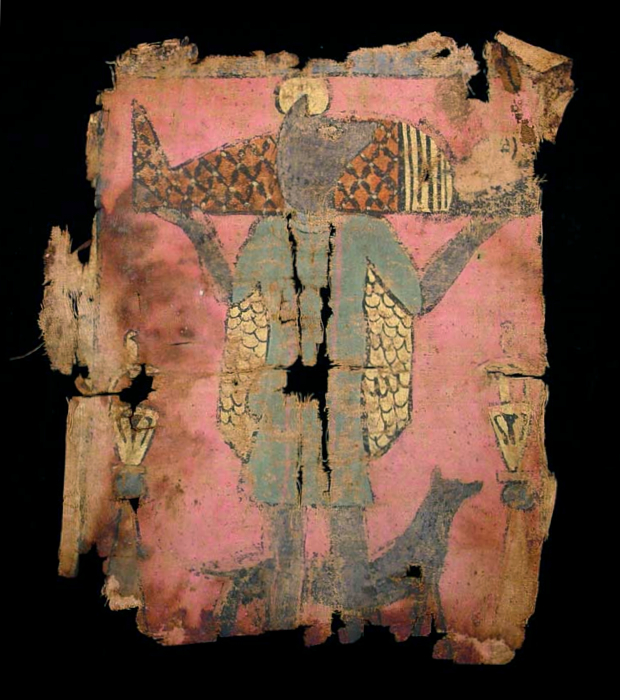

Title: Rare Egyptian Linen Painting Late Ptolemaic To Roman Period
Shipping: $29.00
Artist: N/A
Period: Antiquity
History: N/A
Origin: North Africa > Egypt
Condition: Museum Quality
Item Date: 2nd century BC/AD
Item ID: 6065
A RARE EGYPTIAN PAINTING ON LINEN, Late Ptolemaic to Roman Period, c. 2nd century BC/AD. The painting depicts Anubis, god of the underworld, carrying the mummy of the deceased. 14 x 17 inches. Very rare and reminiscent of scenes from the famous Fayum paintings. *All of the art is edited and chosen by us for its high quality and workmanship before posting. These collectibles have been selected with the artist & collector in mind. We are committed to enhancing our customer’s lives by discovering creating, and pointing out only the best art we can find in the world today. We Are Taste-Makers, Art Advisers, Consultants & Publishers Of Spectacular Art Stories. Our job is to be intermediaries between buyers and sellers. We are vetting for high end art patrons. We are determined to catalog the world's most exceptional art and share it with everyone.
Link: http://en.wikipedia.org/wiki/Egyptian_paintings#Visual_art
The Egyptians were one of the first major civilizations to codify design elements in art. The wall painting done in the service of the Pharaohs followed a rigid code of visual rules and meanings. Early Egyptian art is characterized by absence of linear perspective, which results in a seemingly flat space. These artists tended to create images based on what they knew, and not as much on what they see. Objects in these artworks generally do not decrease in size as they increase in distance and there is little shading to indicate depth. Sometimes, distance is indicated through the use of tiered space, where more distant objects are drawn higher above the nearby objects, but in the same scale and with no overlapping of forms. People and objects are almost always drawn in profile. Also, you may notice the people in Egyptian art are never facing forward. Archaeologists are not yet sure of why, but they are leaning towards the fact that artists status was low in the hierarchy so they could never be in front of a higher authority figure, and never be faced towards them.